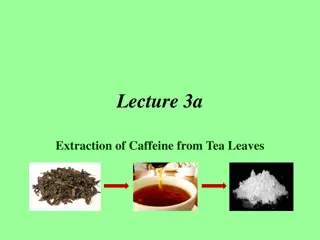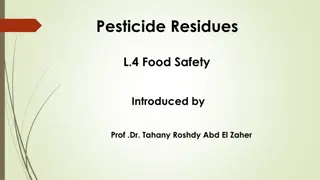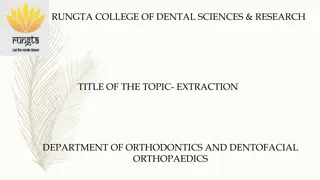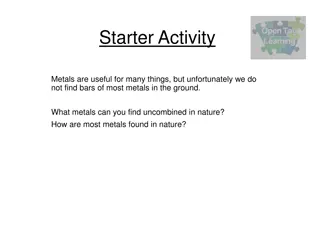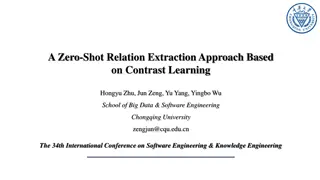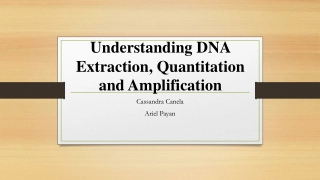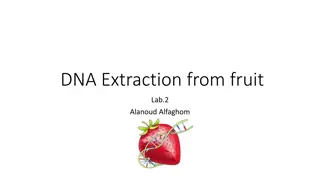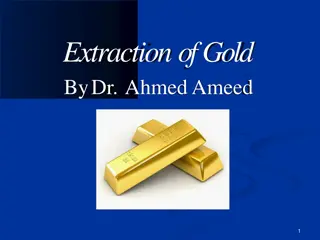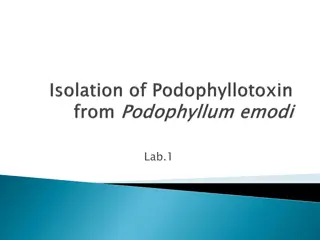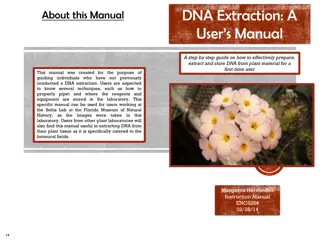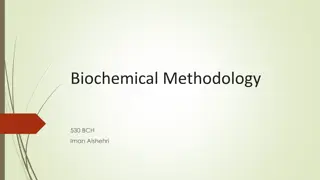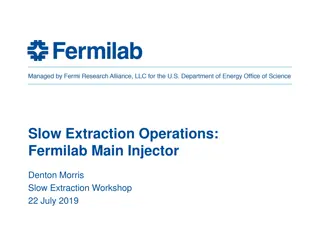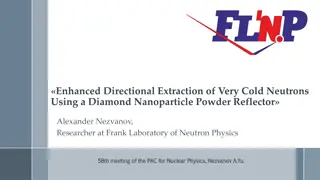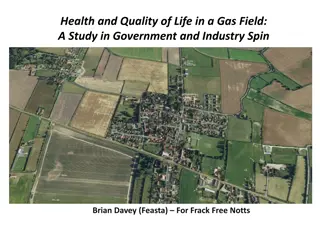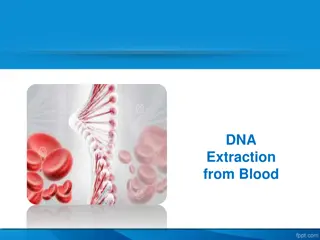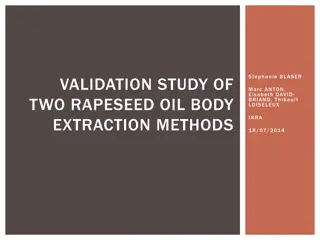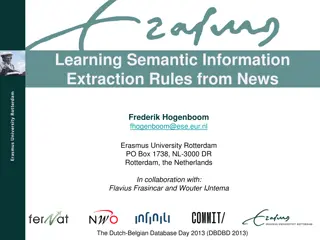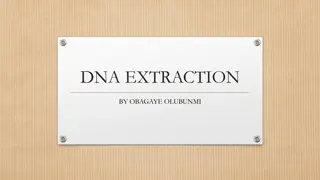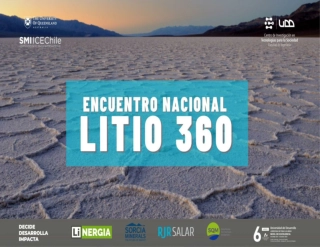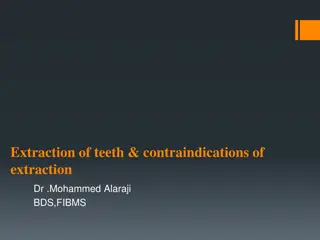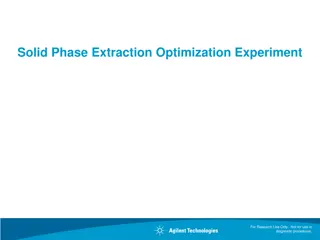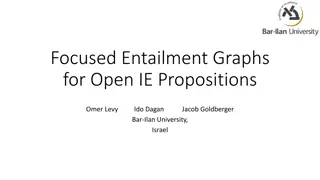Liquid-Liquid Extraction Techniques and Considerations
Understanding liquid-liquid extraction processes like counter-current and co-current cascades, material balances, and system degrees of freedom. Topics include impact of flow rates, partition coefficients, solvent ratios, and purity on extraction efficiency.
Download Presentation

Please find below an Image/Link to download the presentation.
The content on the website is provided AS IS for your information and personal use only. It may not be sold, licensed, or shared on other websites without obtaining consent from the author. Download presentation by click this link. If you encounter any issues during the download, it is possible that the publisher has removed the file from their server.
E N D
Presentation Transcript
For counter-current liquid-liquid extraction, the flow rate difference of passing streams (such as E1 and R2) remains constant throughout the entire cascade. E1 E2 extract 1 2 raffinate R1 R2 A. true B. false C. depends on the maximum solubility of the contaminant
Using a graphical method for counter-current cascades in a partially miscible system, streams exiting the same stage (such as E1 and R1) are connected by __________. E1 E2 extract 1 2 raffinate R1 R2 A. the difference point B. equilibrium curve C. neither of these
Given a constant liquid-liquid extraction partition coefficient, the flow rates of solute (B) and liquid carrier (A), how can one decrease the concentration of B in the raffinate stream? Assume equilibrium is reached at each stage. A. increase the tank size B. decrease the amount of solvent C. increase the amount of solvent D. recycle of the raffinate to the feed
A liquid-liquid extraction of a solute (B) in a feed carrier (A) is performed using a solvent (S). Which of the following, when doubled, will have the greatest impact on increasing the fraction of B extracted? A. flow rate of A B. flow rate of S C. reciprocal of the partition coefficient D. mass ratio of B to the feed (A)
Which of the following material balances is true for a co-current liquid-liquid extraction with stage equilibrium? R1 R2 RN RN+1 Stage 1 Stage 2 Stage N E0 E1 EN-1 EN A. R1 = R2 B. R1 + R2 = E0 + E1 C. E0 + R1 = E1 + R2 D. E0 + R2 = E1 + R1
Vitamin E is isolated from a vegetable oil using hexane in liquid-liquid extraction. How may degrees of freedom does this system have? The mixed feed contains oil, hexane and vitamin E. Extract A. 0 Mixed feed B. 1 Settling Tank Temp = 25 C X wt.% oil Y wt.% C6 Z wt.% Vit.E C. 2 D. 3 Raffinate E. 4
Which of the following will reduce the fraction of solute in the extract stream for a multiple-stage, liquid-liquid extraction? Assume the partition coefficient is > 1, all else is held constant, and two phases are created. A. increase the fraction of solute in the feed B. decrease the amount of solute in the raffinate C. decrease the solvent to feed ratio D. decrease the purity of the solvent (with more solute) E. none of the above
What species is the solute? ethylene glycol A. ethylene glycol B. water C. furfural D. cannot tell water furfural
Which system will have a mixture separate into an extract and raffinate phase with equal compositions? (T solute, H carrier, S solvent) T T A B H S H S C Both A & B
Which system has a greater partition coefficient for the solute (T) in the solvent (S)? Note: H is the carrier fluid. T A T B T H S C H S D S H Cannot tell from plots
What is the maximum amount of the solute T in the feed that can enter an extraction unit if using pure solvent? H is the carrier and S is the extracting solvent. T 0 100 20 80 A. 100% 40 60 B. 85% 60 40 C. 65% 80 D. 40% 20 100 0 S 60 80 100 20 40 0 H
Which axis represents the solute (S)? High S High S C A Low S Low S B
Which stream has the highest flow rate? 100 90 80 70 Wt. % of DIPE 60 50 extract 40 A. solvent 30 20 B. feed 10 C. extract 0 0 10 20 Wt.% of Isopropyl Alcohol 30 40 50 60 D. raffinate E. more than one are highest
For a dilute system, for which separation processes can we not assume constant flow rates? A. immiscible liquid-liquid extraction B. stripping C. partially miscible liquid-liquid extraction D. absorption E. washing


